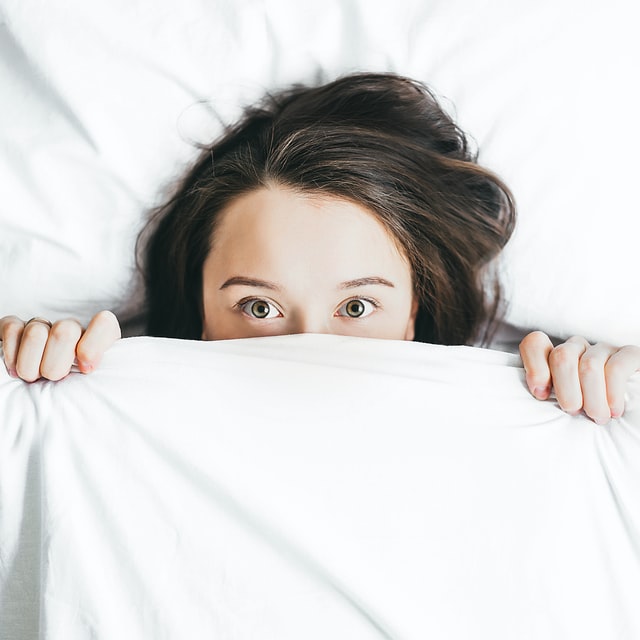Bipolar disorder is a mental health condition that affects your moods. It can make your moods to swing from 1 extreme to another. Sadness and joy (elation) are part of everyday life. Sadness is a universal response to defeat, disappointment, and other discouraging situations while joy is a universal response to success, achievement, and other encouraging situations.
Grief, a form of sadness, is considered a normal emotional response to a loss. Mood disorders are emotional disturbances and are diagnosed when sadness or elation is:
- Overly intense and persistent.
- Accompanied by a requisite number of other mood disorder symptoms.
- Significantly impairs the person’s capacity to function
Although anxiety and related disorders are not classified as part of mood disorders but they often precede or coexist with the two known mood disorders:
- Bipolar disorder.
- Depressive disorder.
In such cases, intense sadness is termed depression, intense elation is termed mania. While depressive disorders are characterized by depression. Bipolar disorders are characterized by varying combinations of depression and mania. Mood disorders can occur in any age. For this discussion, we will be discussing Bipolar disorders.
What is Bipolar Disorder?
Bipolar disorder, also known as manic-depressive disorder, is a chronic and complex disorder of mood characterized by combined episodes of Mania and depression (sadness sever enough or persistent enough to interfere with function and decreased interest or pleasure in activates), which is cyclic, and may alternate, although many patients may have a predominance of one or the other. It is one of the top causes of worldwide mental health disability.
Classification of Bipolar disorder
Bipolar disorders are classified as:
- Bipolar I disorder: Here, the necessary feature is the presence of at least one full-fledged manic episode associated with disruption of normal social and occupational function.Also, there could be depressive episodes. Incidence is about equal in men and women.
- Bipolar II disorder: there is the presence of major depressive episodes with at least one hypomanic episode but no full-fledged manic episodes. Incidence is somewhat higher in females.
- Unspecified bipolar disorder: These disorders have clear bipolar features that do not meet the specific criteria for the other bipolar disorders.
- Cyclothymic Disorder: Patients have prolonged (> 2-year) periods that include both hypomanic and depressive episodes; however, these episodes do not meet the specific criteria for a bipolar or major depressive disorder.
What causes bipolar disorder?
The exact cause of bipolar disorder is unknown, but certain factors have been established viz:
-
Genetics
Heredity plays a significant role. The risk of bipolar disorder is 10-25% when one parent has a mood disorder. Twin studies have shown 70-90% concordance rates in identical twins. Also Chromosomes 18q and 22q have the strongest evidence for linkage to bipolar disorder. Bipolar 1 disorder has the highest genetic link of all psychiatric disorders.
-
Dysregulation of the neurotransmitters
Persistent impairment in one or more neurotransmitter homeostatic regulatory mechanisms confers a trait vulnerability to unstable or erratic neurotransmitter output.
Serotonin, norepinephrine, and dopamine have been implicated.
-
Psychosocial factors may be involved
Stressful life events are often associated with initial development of symptoms and later exacerbations, although cause and effect have not been established.
-
Drugs
Certain drugs can trigger exacerbations in some patients with bipolar disorder. These drugs include:
- Sympathomimetics(e.g., Cocaine, Amphetamine)
- Alcohol
- Certain antidepressants (e.g., tricyclics, noradrenergic reuptake inhibitors)
 Bipolar Disorder Symptoms
Bipolar Disorder Symptoms
Bipolar disorder begins with an acute phase of symptoms, followed by a repeating course of remission and relapse. Remissions are often complete, but many patients have residual bipolar symptoms, and for some, the ability to function at work is severely impaired.
Relapses are discrete episodes of more intense symptoms that are manic, depressive, hypomanic, or a mixture of depressive and manic features. Episodes last anywhere from a few weeks to 3 to 6 months; depressive episodes typically last longer than manic or hypomanic ones.
Cycles — time from onset of one episode to that of the next — vary in length among patients. Some patients have infrequent episodes, perhaps only a few over a lifetime, whereas others have rapid-cycling forms (usually defined as ≥ 4 episodes/year). Only a minority alternate back and forth between mania and depression with each cycle; in most, one or the other predominates.
Patients may attempt or complete suicide Lifetime incidence of suicide in patients with bipolar disorder is estimated to be at least 15 times that of the general population.
-
Mania
A manic episode is defined as more than1 week of a persistently elevated, expansive, or irritable mood and persistently increased goal-directed activity or a noticeable increase of energy plus more than 3 additional symptoms:
- Inflated self-esteem or grandiosity.
- Decreased need for sleep.
- Greater talkativeness than usual.
- Flight of ideas or racing of thoughts.
- Distractibility.
- Increased goal-directed activity.
- Excessive involvement in activities with high potential for painful consequences (e.g. buying sprees, foolish business investments).
Manic patients may be inexhaustibly, excessively, and impulsively involved in various pleasurable, high-risk activities (e.g., gambling, dangerous sports, promiscuous sexual activity) without insight into possible harm. Symptoms are so severe that they cannot function in their primary role (occupation, school, housekeeping). Unwise investments, spending sprees, and other personal choices may have irreparable consequences.
Patients in a manic episode may be exuberant and flamboyantly or colorfully dressed and often have an authoritative manner with a rapid, unstoppable flow of speech. Patients may make clang associations (new thoughts that are triggered by word sounds rather than meaning). Easily distracted, patients may constantly shift from one theme or endeavor to another. However, they tend to believe they are in their best mental state.
Lack of insight and an increased capacity for activity often lead to intrusive behavior and can be a dangerous combination. Interpersonal friction results and may cause patients to feel that they are being unjustly treated or persecuted. As a result, patients may become a danger to themselves or to other people. Accelerated mental activity is experienced as racing thoughts by patients and is observed as flights of ideas by the physician.
-
Manic psychosis
This is a more extreme manifestation, with psychotic symptoms that may be difficult to distinguish from schizophrenic. Patients may have extreme grandiose or persecutory delusions (e.g. being Jesus or being pursued by the FBI), occasionally with hallucinations. Activity level increases markedly.
- Patients may race about and scream, swear, or sing.
- Mood labiality increases, often with increasing irritability.
- Full-blown delirium (delirious mania) may appear, with complete loss of coherent thinking and behavior.
-
Hypomania
A hypomanic episode is a less extreme variant of mania involving a distinct episode that lasts more than 4 days with behavior that is distinctly different from the patient’s usual no depressed self and that includes more than 3 of the additional symptoms listed above under mania.
During the hypomanic period:
- Mood brightens.
- The need for sleep decreases as energy noticeably increases, and psychomotor activity accelerates.
For some patients, hypomanic periods are adaptive because they produce high energy, creativity, confidence, and supernormal social functioning. Many do not wish to leave the pleasurable, euphoric state. Some function quite well, and functioning is not markedly impaired. However, in some patients, hypomania manifests as distractibility, irritability, and labile mood, which the patient and others find less attractive.
-
Depression
A depressive episode has features typical of major depression. The episode must include more than 5 of the following during the same 2-week period, and one of them must be depressed mood or loss of interest or pleasure and, with the exception of suicidal thoughts or attempts.All symptoms must be present nearly every day:
- Depressed mood most of the day.
- Markedly diminished interest or pleasure in all or almost all activities for most of the day.
- Significant (>5%) weight gain or loss or decreased or increased appetite
- Insomnia (often sleep-maintenance insomnia) or hypersomnia.
- Psychomotor agitation or retardation observed by others (not self-reported)
- Fatigue or loss of energy.
- Feelings of worthlessness or excessive or inappropriate guilt.
- Diminished ability to think or concentrate or indecisiveness.
- Recurrent thoughts of death or suicide, a suicide attempt, or specific plan for suicide
Psychotic features are more common in bipolar depression than in unipolar depression.
-
Mixed features
An episode of mania or hypomania is designated as having mixed features if more than 3 depressive symptoms are present for most days of the episode. This condition is often difficult to diagnose and may shade into a continuously cycling state; the prognosis is worse than that in a pure manic or hypomanic state. Risk of suicide during mixed episodes is particularly high.
Diagnosis
The first steps in diagnosing bipolar disorder are by talking to your doctor or mental health physician. Firstly, a doctor performs:
- A physical evaluation to rule out any other conditions that may be causing symptoms.
- The doctor will then conduct a comprehensive mental health evaluation to assess the patient’s symptoms in accordance with the specific criteria from the American Psychiatric Association’s Diagnostic and Statistical Manual of Mental Disorders (DSM-5).
To be diagnosed with bipolar disorder, a person must have experienced at least one episode of mania or hypomania. To be considered mania, the elevated, expansive, or irritable mood must last for at least one week and be present most of the day, nearly every day while to be considered hypomania, the mood must last at least four consecutive days and be present most of the day, almost every day.
During this period, three or more of the following symptoms must be present and represent a significant change from usual behavior:
- Inflated self-esteem or grandiosity.
- Decreased need for sleep.
- Increased talkativeness.
- Racing thoughts.
- Distracted easily.
- Increase in goal-directed activity or psychomotor agitation.
- Engaging in activities that hold the potential for painful consequences, e.g. unrestrained buying sprees.
 The depressive side of bipolar disorder is characterized by a major depressive episode resulting in depressed mood or loss of interest or pleasure in life. The DSM-5 states that a person must experience five or more of the following symptoms in two weeks to be diagnosed with a major depressive episode:
The depressive side of bipolar disorder is characterized by a major depressive episode resulting in depressed mood or loss of interest or pleasure in life. The DSM-5 states that a person must experience five or more of the following symptoms in two weeks to be diagnosed with a major depressive episode:
- Depressed mood most of the day, nearly every day.
- Loss of interest or pleasure in all, or almost all, activities.
- Significant weight loss or decrease or increase in appetite.
- Engaging in purposeless movements, such as pacing the room.
- Fatigue or loss of energy.
- Feelings of worthlessness or guilt.
- Diminished ability to think or concentrate, or indecisiveness.
- Recurrent thoughts of death, recurrent suicidal ideation without a specific plan, or a suicide attempt.
Pregnancy And Bipolar Disorder
Bipolar Disorder (BD) as a mental disorder is usually diagnosed between 18 and 30 years of age which coincides with the age of child bearing. The complex picture of problems that women with BD face include: sexually risky behavior during episodes of mania, health related risks for the mother and/or the baby, decisions regarding medication during pregnancy, as well as decisions related to unplanned/undesired pregnancy, and sexually transmitted infections
A clear negative impact of bipolar disorder on mothers’ and their babies’ health has been reported. Adverse outcomes such as:
- Gestational hypertension.
- Ante partum hemorrhage.
- Increased rates of induction of labour and caesarean section.
- Increased risk of mood disorders in the postnatal period.
- The risk of fetuses developing severe growth retardation.
- Increased neonatal morbidity.
- Higher incidence of congenital abnormalities (if woman are treated with mood stabilizers).
- Neonatal readmissions.
These negative outcomes lead to longer duration of hospital stay.
 Bipolar Disorder Treatment
Bipolar Disorder Treatment
Bipolar disorder symptoms commonly improve with treatment. Medication is the cornerstone of bipolar disorder treatment; though psychotherapy can help many patients learn about their illness and adhere to medications thus preventing future mood episodes.
Medications known as “mood stabilizers” (e.g., lithium) are the most commonly prescribed type of medications for bipolar disorder. These medications are believed to correct imbalanced brain signaling. Because bipolar disorder is a chronic illness in which mood episodes typically recur, ongoing preventive treatment is recommended.
Bipolar disorder treatment is individualized; people with bipolar disorder may need to try different medications before finding what works best for them. In some cases, when medication and psychotherapy have not helped, an effective treatment known as electroconvulsive therapy (ECT) may be used. ECT involves several rounds of a brief electrical current applied to the scalp while the patient is under anesthesia, leading to a short, controlled seizure. ECT-induced seizures are believed to remodel brain-signaling pathways.
Since bipolar disorder can cause serious disruptions in a person’s daily life and create a stressful family situation, family members may also benefit from professional resources, particularly mental health advocacy and support groups. From these sources, families can learn strategies for coping, participating actively in the treatment, and obtaining support.
Conclusion
In conclusion, medical co-morbidities are quite prevalent in patients with bipolar disorder because of the adverse effects of treatment with mood stabilizers, anticonvulsants, antipsychotics, genetic vulnerability, and lifestyle factors (poor diet, lack of exercise, alcohol use, and smoking). Keeping in mind the burden of these co-morbidities and adverse effects of pharmacotherapy, regular monitoring of the following is important:
- Weight.
- Blood glucose levels.
- Lipid profile.
- Blood pressure.
- Liver function.
- Blood concentrations of lithium and valproateshould be regularly monitored to ensure they are within the therapeutic range.
Renal and thyroid function testing are necessary because treatment with lithium is known to be associated with the deterioration of kidney function, reduced thyroid hormone function (hypothyroidism) and nephrogenic diabetes insipidus.
For patients receiving valproate, the liver function should be monitored, and, in women, cases of polycystic ovary disease (PCOD) have been reported with valproate therapy.

